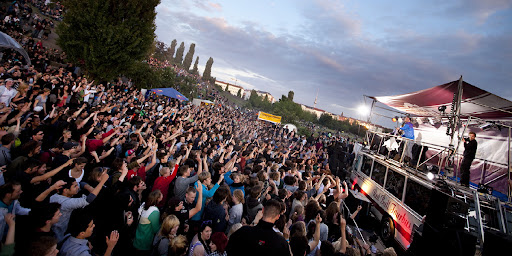A New Era of Technological Convergence
In the world of stage lighting design, both pixel mapping and real-time AI control are well-established technologies. But when these two innovations converge, they open a new frontier in visual performance. This fusion not only boosts programming efficiency but also unlocks unprecedented creative freedom, reshaping how lighting designers approach concerts, theatrical installations, and immersive experiences.
Pixel mapping treats a network of lighting fixtures as a unified digital canvas, enabling video content to be “mapped” across individual LED pixels in real time. Meanwhile, AI real-time control introduces intelligent responses to environmental cues—such as music, audience behavior, or emotional states—allowing systems to adapt dynamically and interactively.
The Evolution of Pixel Mapping—From Static Content to Intelligent Visual Language
Traditional pixel mapping required extensive pre-programming and precise layout planning—especially for complex installations with irregular fixture arrays. The process was labor-intensive, often demanding high technical expertise from lighting operators.
With the arrival of AI, pixel mapping has entered a new phase. AI algorithms can now interpret live camera feeds to identify spatial outlines and automatically optimize mapping accuracy. By analyzing visual structures and distribution of attention, AI can enhance key regions of a stage with concentrated effects—delivering stronger visual impact without manual intervention.
In addition, AI introduces rhythm-aware mapping: analyzing beats, tempo, and harmonic shifts to trigger real-time animations that flow organically with music. The result is a dynamic lightscape that feels alive—constantly evolving with the performance.
Real-Time AI Control Creates a Self-Adaptive Lighting Ecosystem
AI control moves beyond pre-scripted cues; it becomes a creative co-pilot that continuously interprets the environment. Key capabilities include:
Audio Analysis: AI listens to crowd cheers and music intensity, adjusting brightness and color saturation to build emotional climaxes.
Human Traffic Heatmapping: Infrared sensors detect where the crowd is densest, automatically shifting lighting focus to those zones.
Emotion Recognition: Facial recognition tools identify audience mood shifts, allowing lighting to respond accordingly—warming up when joy rises, cooling down during solemn moments.
This intelligence proves invaluable in electronic dance festivals, immersive theater, and experiential exhibitions. AI lighting systems no longer hide backstage—they become part of the artistic voice.
Case Studies—AI + Pixel Mapping in Practice
Leading lighting designers across the globe have already adopted this hybrid approach in real-world projects:
Case 1: Berlin Techno Festival
A major Berlin techno event used ultra-wide LED grids combined with AI-driven pixel mapping. The system continuously analyzed changes in DJ tracks, auto-generating thousands of unique lighting visuals. This minimized repetition and maintained high audience engagement over long sets.
Case 2: “Future City” Exhibition in Shanghai
This immersive exhibit deployed AI-controlled lighting tied to audience movement. As visitors approached specific zones, the system triggered area-specific lighting pathways and floor pixel projections, creating a real-time dance between people and light.
Case 3: French Experimental Theater Group
In this avant-garde theater, AI monitored actors’ positions, tone, and emotional shifts. Lighting walls with mapped pixels responded instantly, transforming stage light from static backdrop into an active co-actor in the performance.

Challenges and Future Trends—Balancing Data, Algorithms, and Art
As promising as this fusion is, it introduces new complexities:
High Data Training Costs: AI requires large amounts of behavioral and environmental data for model training, which is impractical for short-term events.
Algorithmic Misfires: If the AI misreads audience sentiment, the lighting response may feel jarring (e.g., bright pulses during a somber scene).
Creative Ownership: Who owns the visual content created by AI systems—the lighting designer or the algorithm’s developer? This is an increasingly hot topic.
Looking ahead, AI + pixel mapping systems are trending toward modularity and accessibility. Even small touring groups or pop-up installations can now deploy simplified AI models for personalized effects.
Moreover, open-source platforms are emerging. More manufacturers support AI integration with tools like TouchDesigner and Node systems—enabling programmers, designers, or even performers themselves to craft intelligent visuals collaboratively.
Redefining Lighting as an Intelligent Creative Medium
When pixel mapping enters the AI era, lighting ceases to be a passive visualization tool—it becomes an active, adaptive creative medium that listens, responds, and co-creates with performers and audiences alike.
This evolution transforms the role of lighting designers, who now act more like “experience architects.” And for the audience, lighting transitions from background enhancement to emotive dialogue—a language of color, motion, and rhythm born from real-time awareness.
We are entering a new creative era where:
Pixels are no longer static building blocks, but sentient visual units capable of learning and reacting.
AI is not just code, but a silent creative partner shaping the energy of a live show.
READ MORE:





Blue Sea Lighting is an enterprise with rich experience in the integration of industry and trade in stage lighting and stage special effects related equipment. Its products include moving head lights, par lights, wall washer lights, logo gobo projector lights, power distributor, stage effects such as electronic fireworks machines, snow machines, smoke bubble machines, and related accessories such as light clamps.
Quick Links
For more questions subscribe to our email








